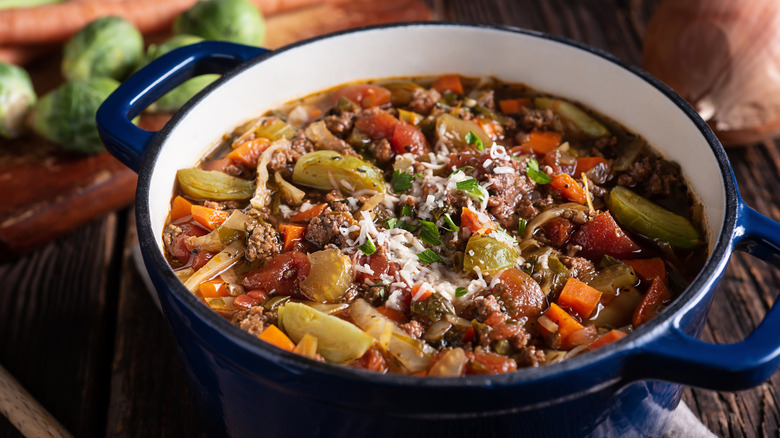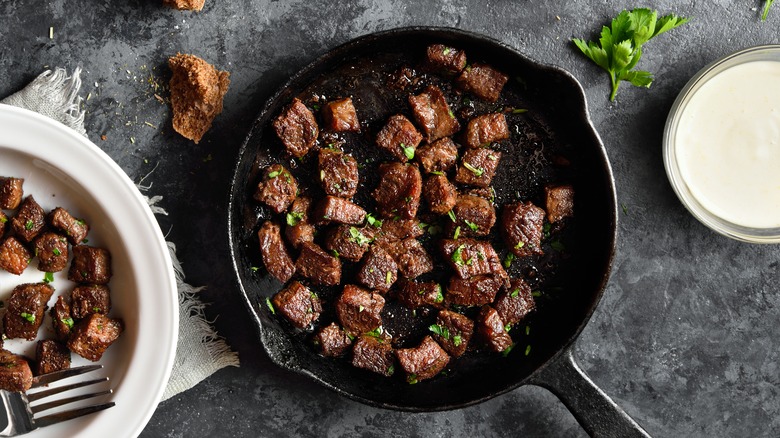The Time-Saving Tip When Browning Beef For Stew
Besides choosing the best ingredients you can get, and assembling all the right tools, making a delicious beef stew starts with the key step of browning the meat. This process amplifies the flavor of your stew by adding a seared taste to the dish. However, standing by the stove and flipping tiny cubes of beef to brown every side can be pretty time-consuming. Luckily, you don't need to do that. Instead, simply brown the whole piece of beef before cutting it into cubes.
Why does this approach work wonders? When you brown a large beef chunk, you're dealing with fewer pieces to turn and manage in the pan. This means you spend less time laboriously searing numerous small pieces. Instead, you can focus on perfectly browning each side of the larger piece, developing a rich crust that's packed with flavor.
This method is not just a time-saver, it also ensures that you lock in juices and flavors, resulting in every bite being tender and savory. After browning, let the beef rest for a few minutes, cut it into cubes, and then proceed with your stew recipe as usual. You'll also find that slicing cooked meat is easier and quicker than cutting raw, further saving you time and effort in the kitchen.
Get even more browned flavor into your beef stew
After you've seared your beef whole and then cut it into cubes, you can further enhance the browning during the stewing process. The trick here is to let the beef braise with the lid open instead of completely closed. Typically, stews are cooked with the lid closed to trap heat and moisture, which helps tenderize the meat. However, cooking with the lid slightly open brings a different advantage.
It allows some of the moisture to escape which creates a richer stew. The reduced liquid level will leave the top surface of the beef exposed and allow for further browning and hence a more flavorful finished dish. Braising with the lid partially open requires a bit more attention than the closed-lid method. Therefore, you'll need to keep an eye on the liquid level, ensuring that the stew doesn't completely dry out. It might require occasional additions of broth or water to maintain the desired consistency. However, this extra vigilance pays off in the form of a stew with enhanced flavor and color.
Moreover, this technique can also help develop a thicker, more luxurious sauce for your stew. As the liquid slowly evaporates, the sauce reduces and concentrates, clinging to the beef cubes and vegetables, and creating a heartier, more satisfying stew.

